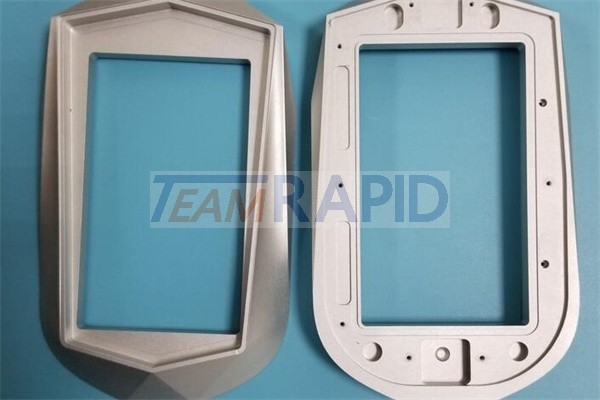What Is CNC Aluminum Prototyping
Aluminum is one of the ideal materials for CNC Aluminum rapid Prototyping. It provide the the capability in house. A lot of time can be saved making an aluminum mold compared to making a mold from hardened steel. Aluminum can also be used for carbon fiber or thermal forming molds, as opposed to the costly process of building an injection mold.
Commonly Used Aluminum Prototyping Materials
It’s important to evaluate the best type of aluminum for the job. What types of aluminum are used for rapid prototyping? The most widely used grade of aluminum for prototype or production is 6061. 6061 aluminum is an ideal material to fabricate with. It can be forged or extruded, has a high strength-to-weight ratio, is widely available commercially and is reasonably priced. For these reasons, many industries prefer using 6061 aluminum for a wide variety of applications. If your prototype requires aluminum that is structurally stiffer and harder, 7075 aluminum might be necessary. 7075 is lightweight, on par with 6061.
Besides being easy to work with when machining or welding, 6061 aluminum is an ideal material to fabricate with. It can be forged or extruded, has a high strength-to-weight ratio, is widely available commercially and is reasonably priced. For these reasons, many industries prefer using 6061 aluminum for a wide variety of applications.
If your prototype requires aluminum that is structurally stiffer and harder, stepping up to 7075 aluminum might be necessary. Not surprisingly, this stronger aluminum is preferred for manufacturing firearms and aerospace components. This is also because, despite its added strength, 7075 is still lightweight, on par with 6061. Although there are many different aluminum series are available, the overall preference for CNC machining is 6061.

Aluminum Prototyping Steps
In order to appreciate the process of CNC aluminum prototyping, it’s helpful to walk through the procedure in a step-by-step format. Let’s start from the initial CAD/CAM process and work towards the finished part. Here are our top tips:
Step 1) Design your parts for manufacturability
Step 2) Determine which grade of aluminum you are going to use
Step 3) Choose your cutting tools
Step 4) Determine the feed and speeds for the job
Step 5) Consider using uncoated instead of coated tools
Step 6) Watch out for inherent stresses within the material
There are several benefits of choosing to CNC aluminum prototyping in-house. It typically saves time and costs. To start, you introduce the ability to rework a part on short notice; in fact, you may be able to avoid making a whole new part entirely. If you want to make CNC aluminum prototyping, you could simply register off a feature using the machine probe, update your tool paths to the newest model, and resolve the request in-house, at a moment’s notice. You might avoid creating a new part entirely since aluminum is so easy to rework.
We hope this article provides you with the information you need to make Aluminum Prototypes. If you have any additional questions you are welcome to contact us.
Contact Us
When you’re making small or complicated parts, you need speed and precision at every stage. TEAM Rapid providesAluminum Rapid Prototyping Services. We will not only invent a faster more precise CNC machine. We re-interpret and optimized your whole machining workflow from start to finish. For more information, contact us at [email protected] to request a rapid manufacturing quote.